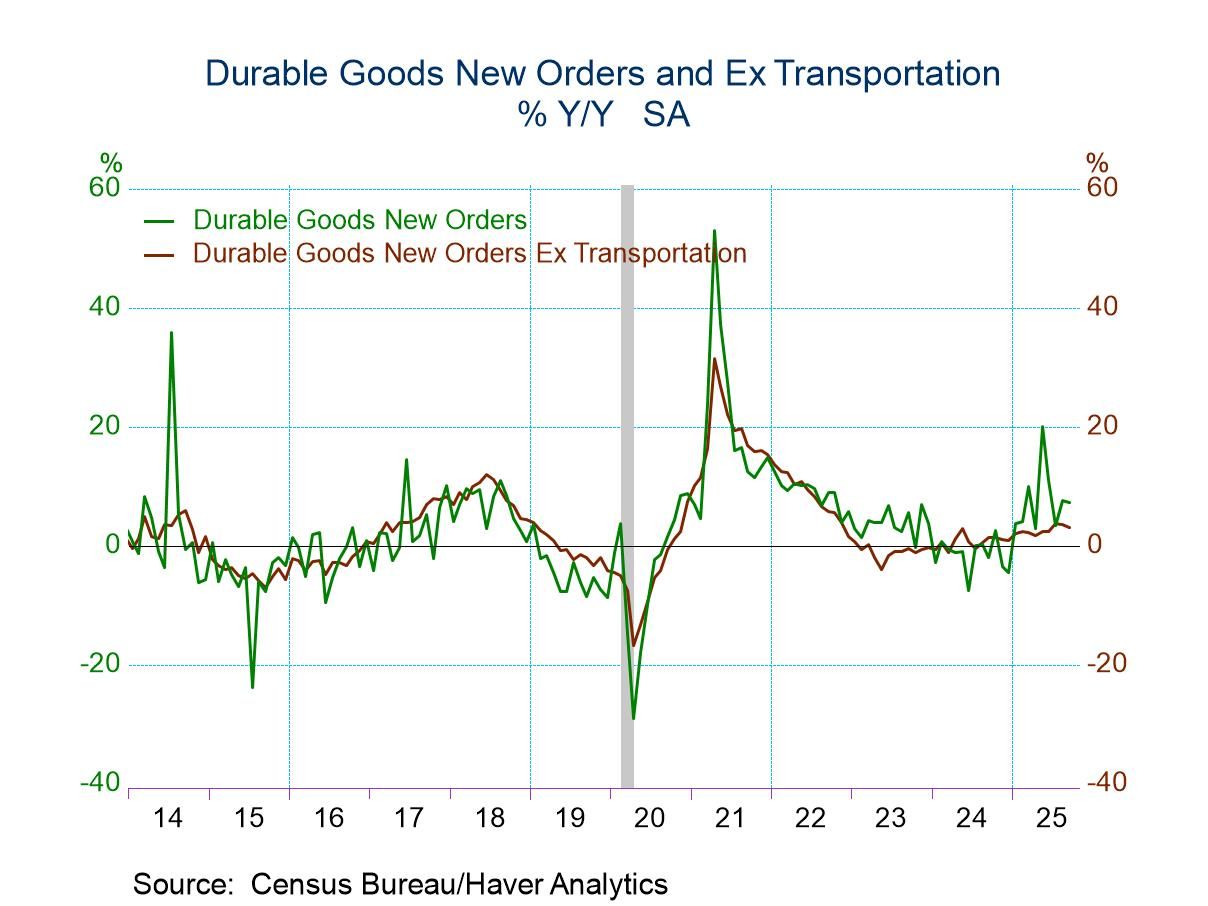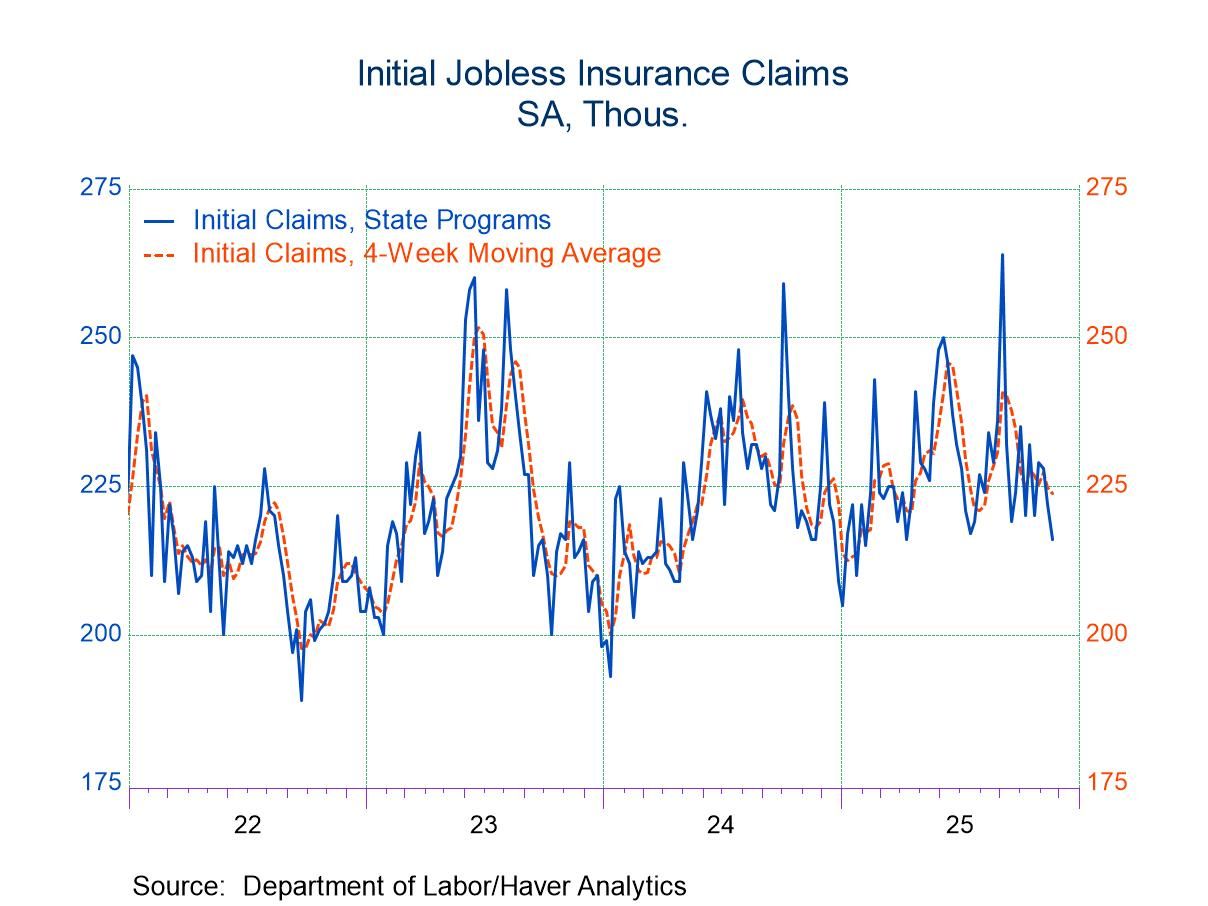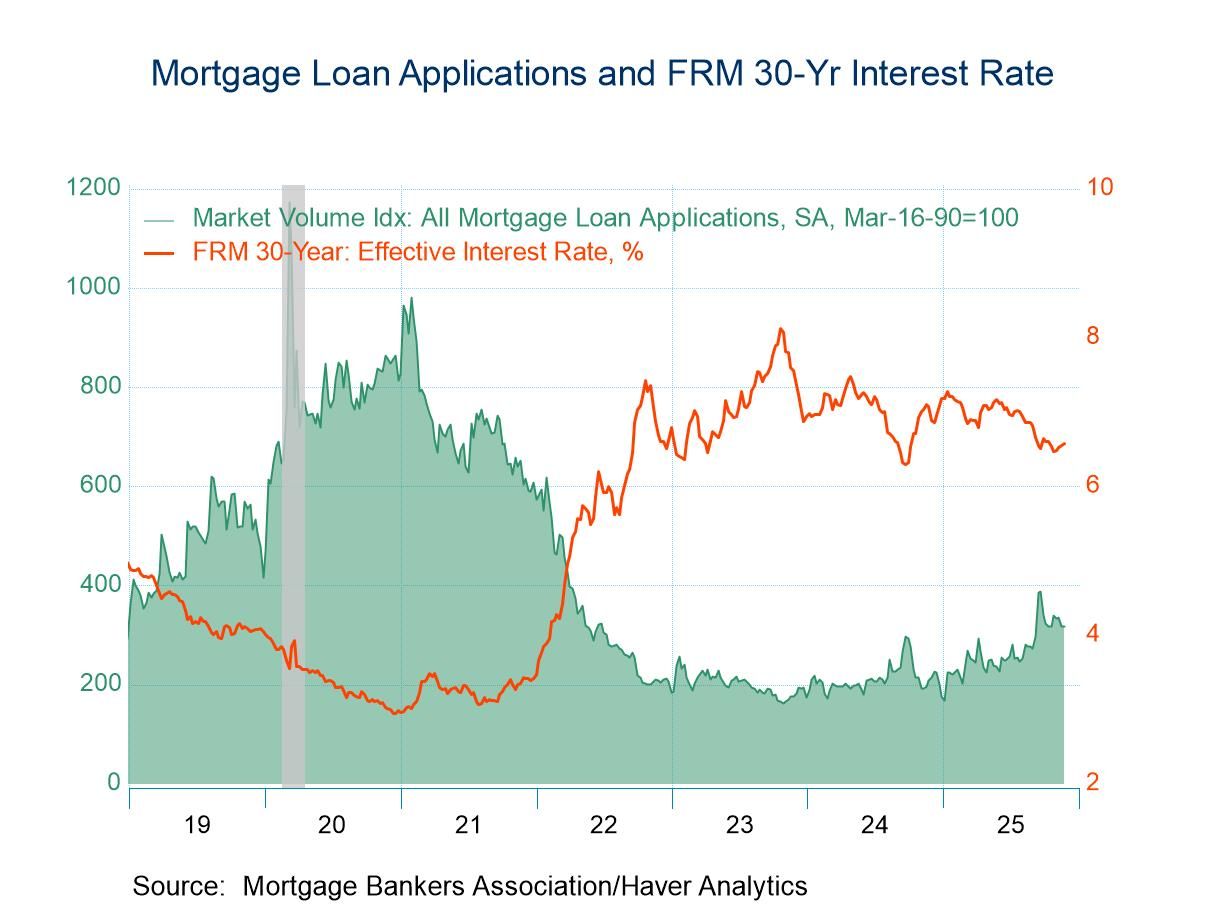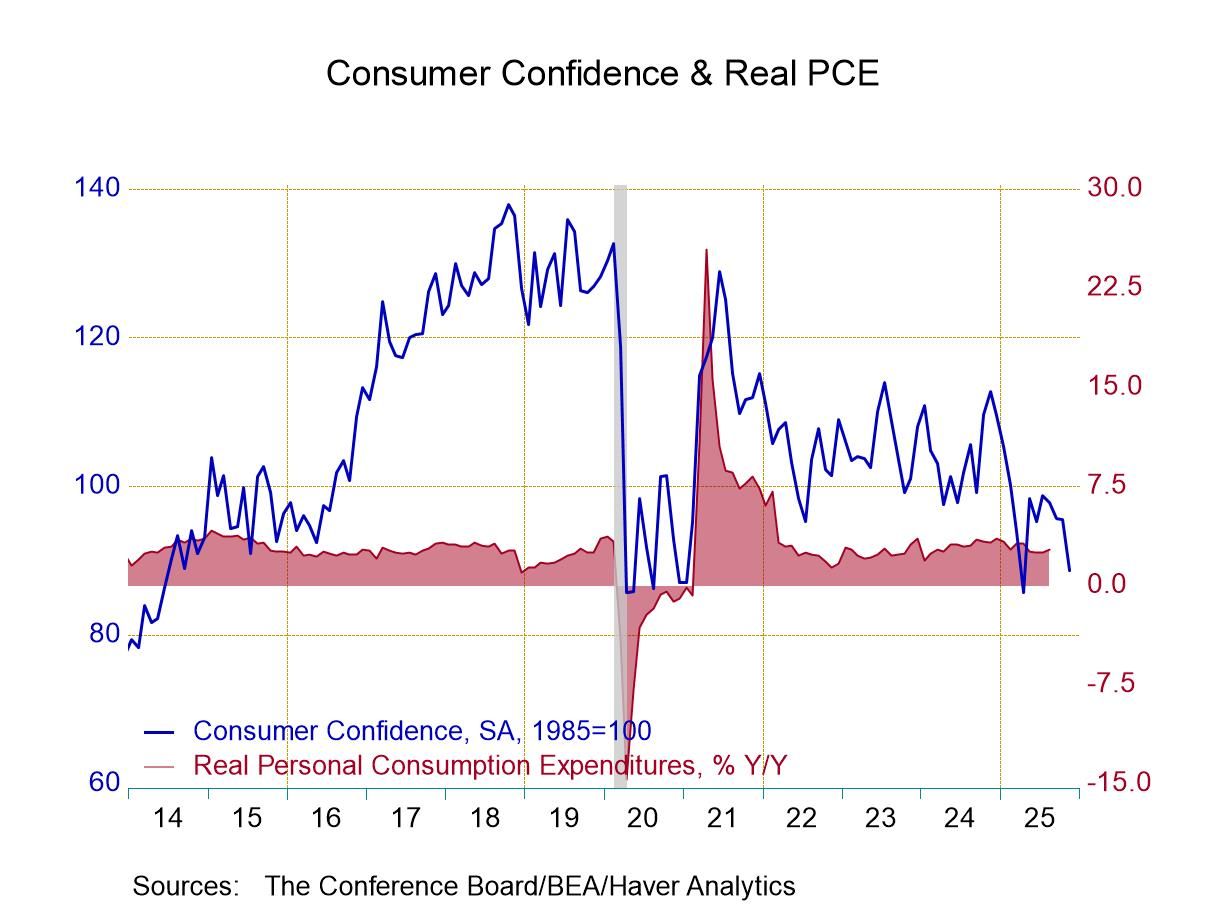U.S. Retail Gasoline Prices Unchanged as WTI Price Falls
by:Sandy Batten
|in:Economy in Brief
Summary
- Retail gasoline prices unchanged in latest week.
- The price of WTI fell to $61.79, its lowest since the week of May 30.
- The price of natural gas rose 26 cents to $3.16, the highest since July 25.
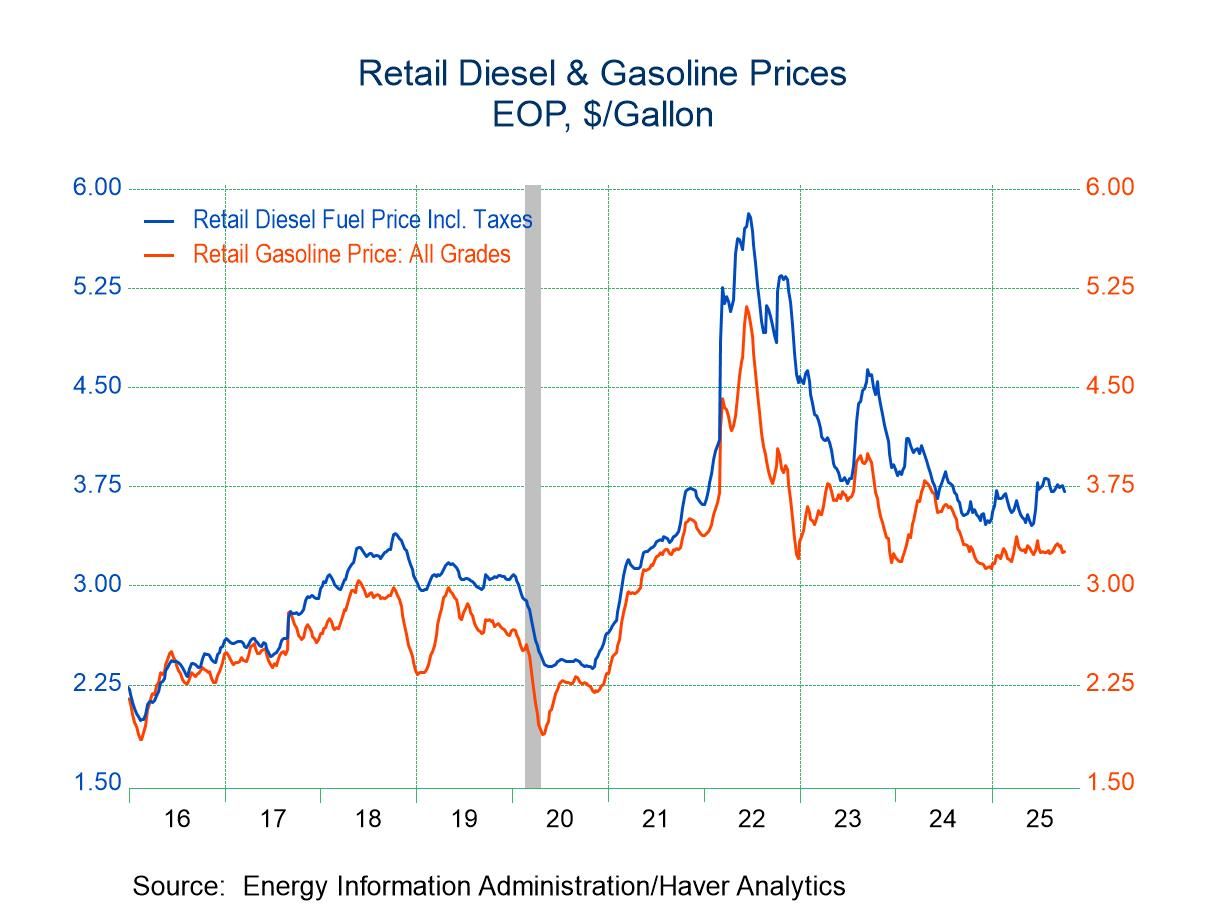
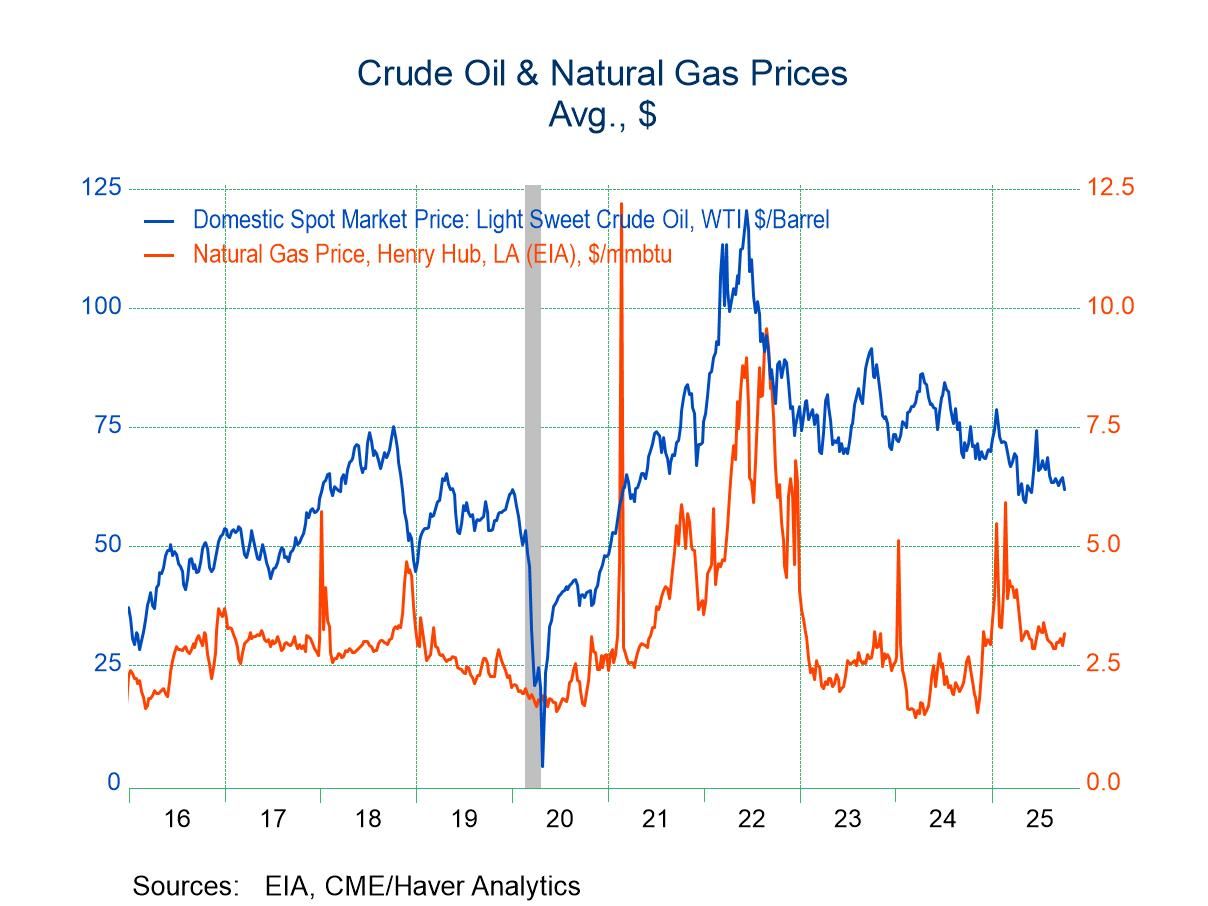
Retail gasoline prices for all grades were unchanged at $3.25 per gallon (-0.2% y/y), on average, in the week ended October 6 after falling five cents per gallon in the previous week. Gasoline prices are at their lowest level since August 11. The recent high was $3.79 in the week ending April 22, 2024. Their all-time high of $5.11 occurred in the week ending June 13, 2022. Haver Analytics seasonally adjusts the retail prices of regular grade gasoline. That price edged down to $3.05 last week from $3.06 in the previous week.
The price of West Texas Intermediate crude oil fell to $61.79 per barrel (-13.5% y/y) in the week ended October 3 after rising in the prior week to $64.35 per barrel. Prices remained below a recent high of $74.17 during the third week of June. The cost of crude oil peaked at $120.46 in the week of June 10, 2022. Yesterday, the price was $61.69 per barrel. The price of European Brent crude fell to $67.15 per barrel (-11.5% y/y) in the week of October 3 from $69.22 in the prior week. Prices remained below a recent high of $95.61 in the week of September 29, 2023 and below a peak of $127.40 in June 2022. Yesterday, the price was $67.09 per barrel.
Natural gas prices rose to an average $3.16/mmbtu (18.4% y/y) in the week ended October 3, from $2.90/mmbtu in the prior week. Prices remained well above the recent low of $1.40/mmbtu in the week of March 15, 2024 but below their peak of $9.56 in the week of August 26, 2022. Yesterday, the price was $3.32 per mmbtu.
Gasoline demand declined 0.5% y/y in the four weeks ending September 26, following an unchanged annual reading in the prior four weeks. Demand for all petroleum products rose 1.2% y/y in the four weeks ending September 26, after a 0.9 y/y increase in the previous four-week period. Crude oil input to refineries rose 0.9% y/y in the four weeks ending September 26, after a 0.2% y/y gain in the prior four weeks.
Gasoline inventories eased 0.2% y/y in the week ending September 26 on top of a 1.6% y/y decline in the prior week. Residual fuel oil inventories fell 15.9% y/y in the week of September 26, after falling 14.8% y/y in the prior week. By contrast, crude oil inventories rose 3.0% y/y in the week of September 26, down slightly from a 3.2% y/y gain in the previous week.
Measured in days’ supply, gasoline inventories rose to 25.4 days in the week of September 26 from 24.5 days in the prior week. The recent low was 22.9 days in the week of November 8, 2024. The supply of crude oil edged higher to 25.3 days in the week of September 26 from 24.9 days in the prior week but remained below a recent high of 31.9 days in the week of March 3, 2023.
These data are reported by the Energy Information Administration of the U.S. Department of Energy. The price and supply/demand data can be found in Haver’s WEEKLY and USENERGY databases.
Sandy Batten
AuthorMore in Author Profile »Sandy Batten has more than 30 years of experience analyzing industrial economies and financial markets and a wide range of experience across the financial services sector, government, and academia. Before joining Haver Analytics, Sandy was a Vice President and Senior Economist at Citibank; Senior Credit Market Analyst at CDC Investment Management, Managing Director at Bear Stearns, and Executive Director at JPMorgan. In 2008, Sandy was named the most accurate US forecaster by the National Association for Business Economics. He is a member of the New York Forecasters Club, NABE, and the American Economic Association. Prior to his time in the financial services sector, Sandy was a Research Officer at the Federal Reserve Bank of St. Louis, Senior Staff Economist on the President’s Council of Economic Advisors, Deputy Assistant Secretary for Economic Policy at the US Treasury, and Economist at the International Monetary Fund. Sandy has taught economics at St. Louis University, Denison University, and Muskingun College. He has published numerous peer-reviewed articles in a wide range of academic publications. He has a B.A. in economics from the University of Richmond and a M.A. and Ph.D. in economics from The Ohio State University.



